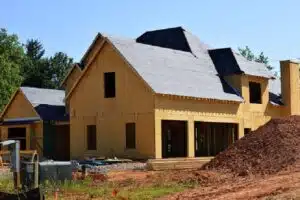
Photo by Natalie Rhea on Unsplash
The Texas Economy
According to a Forbes report, as at the close of 2019, Texas GDP stood at almost $2 trillion; employment rate was over 96%, and average household income was well over $60,000 per annum.
But then COVID-19 happened. It triggered a steep economic decline. Texas lost over 1.4 million jobs in the second quarter of 2020. It was hard to predict what would happen in 2021. But against the odds, the recovery has been equally remarkable.
By the end of September 2020, Texas had recovered more than 661,000 jobs. The non-farm sector created more than 40,000 jobs in September alone. Construction was also on a rebound. Although there were occasional dips, most of the major metros registered growth in construction indices.
Construction indices are a vital part of the real estate market performance. Dipping numbers suggest slowing down in the supply of new units. In a low-interest-rate environment, a constrained housing inventory could result in high prices. For the market to be balanced, it requires a 6-month supply lead.
Texas Real Estate Market Review
News of an effective vaccine against COVID-19 brought enthusiasm to all Americans. It also re-invigorated the economic engines. Although the economy still faced headwinds, the vaccine took care of the uncertainty and fears of lockdowns.
During the year 2020, areas that were less adversely affected by the pandemic registered significant growth in the real estate market.
However, due to fears of another COVID-19 wave, potential sellers refrained from listing their homes or hosting in-house showings. It resulted in a dip in supply, especially for homes under $300,000.
Since interests were low, demand rose significantly; yet supply was constrained. Prices for homes naturally surged, stretching housing affordability beyond the reach of many prospective homeowners.
The same conditions were expected to prevail in early 2021. However, as lockdowns and fears about COVID-19 waned, supply was expected to pick up in 2021.
The Texas Real Estate Research Center expected that despite strained affordability, the state’s real estate sales would grow by 8.4%.
Texas Real Estate Statistics
The real estate market in different cities in Texas responded uniquely to the effects of COVID-19.
In San Antonio, for instance, fluctuations in the home appreciation rates are not strange. Homes appreciated by as much as 37% in the fourth quarter of 1981. In the fourth quarter of 1982, home values dipped by as much as -15%.
In 2020, San Antonio homes appreciated by an average of 3.65%. Although this was less than the 2019 average rate of 4.75%, the drop pushed the last quarter sales in San Antonio City up by 9%. The housing inventory went down from a 2.3 months lead in September to a 2.1 months lead in October, driving the average home prices up by 13%.
The story was not different in Houston, and Dallas. In Houston, historically low mortgage rates, coupled with a supply glut, set up the market for a boom. The median list price of homes in Houston was up by 12.7% (year-over-year) by October 2020. In Dallas, although the COVID-19 pandemic triggered a 35% dip in the real estate sales of May 2020, low-interest rates and a dwindling supply pushed the median home prices up by 17% by October 2020.
Overall, the entire Texan real estate market sales exceeded 34,600 homes. It was a near 25% increase from the October 2019 figures. Analysts anticipate that the same environment (of high demand and strained supply) would prevail in 2021.
Texas Real Estate Forecast
Low interests and rising prices were pushing home-affordability through the roof. Fears of a COVID-19 wave ensured supply was strained. However, developers responded swiftly and accelerated construction activity. A survey conducted by Zonda revealed that a near-record 153,600 single-family housing construction permits were issued in Texas in 2020.
In San Antonio, home prices increased by 2.1% in the last quarter of 2020, and prices are expected to continue to rise throughout 2021. Three and four-bedroom single-family detached homes are the most common units.
In the same way, Houston’s property sales in 2020 exceeded 2019 figures by 11.6%. Due to the supply glut, the average time a home stays on the market came down from 59 days to 46 days. It pushed the median price of homes in Houston, up 12.7% which was higher than the 2019 figures. The median price of single-family units, townhouses, and condos went up by between 12.5% and 17%.
In conclusion, the housing market in Texas has historically shown resilience. Experts expect it to continue on a strong-demand, strained-supply path. Due to demand-driven high prices, lenders could tighten lending criteria. However, organizations such as TexasFHA.org can help you take advantage of these thriving real estate markets. Reach out to our advisors and get help in making your dream a reality.

